About Pamukkale
Pamukkale and Hierapolis are two fascinating attractions in Turkey protected under the UNESCO World Heritage. Pamukkale is famous for the incredible white travertine terraces on which Hierapolis, once a major center of trade and culture, sat atop.
The hot springs release mineral-rich water onto the landscape below, forming a unique structure that looks like a cotton castle, and that is where the name comes from.
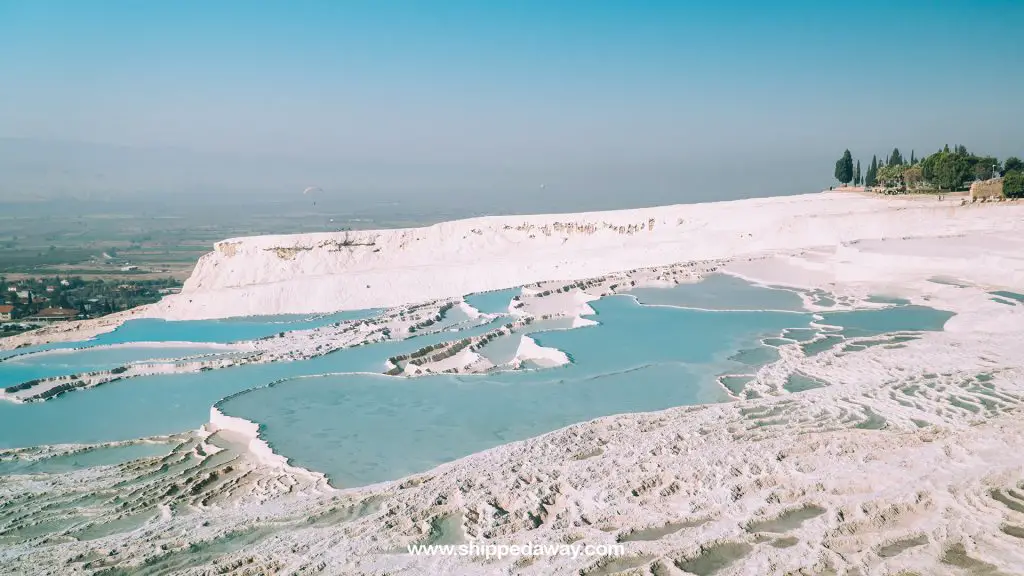
Hierapolis was known for its thermal springs and became a famous tourist destination centuries ago. The city was also known for its temples, theatres, and sarcophagi.
We can only imagine how “cool” the citizens of this ancient city were in those times. The city flourished until it was destroyed by an earthquake in 1179 AD.
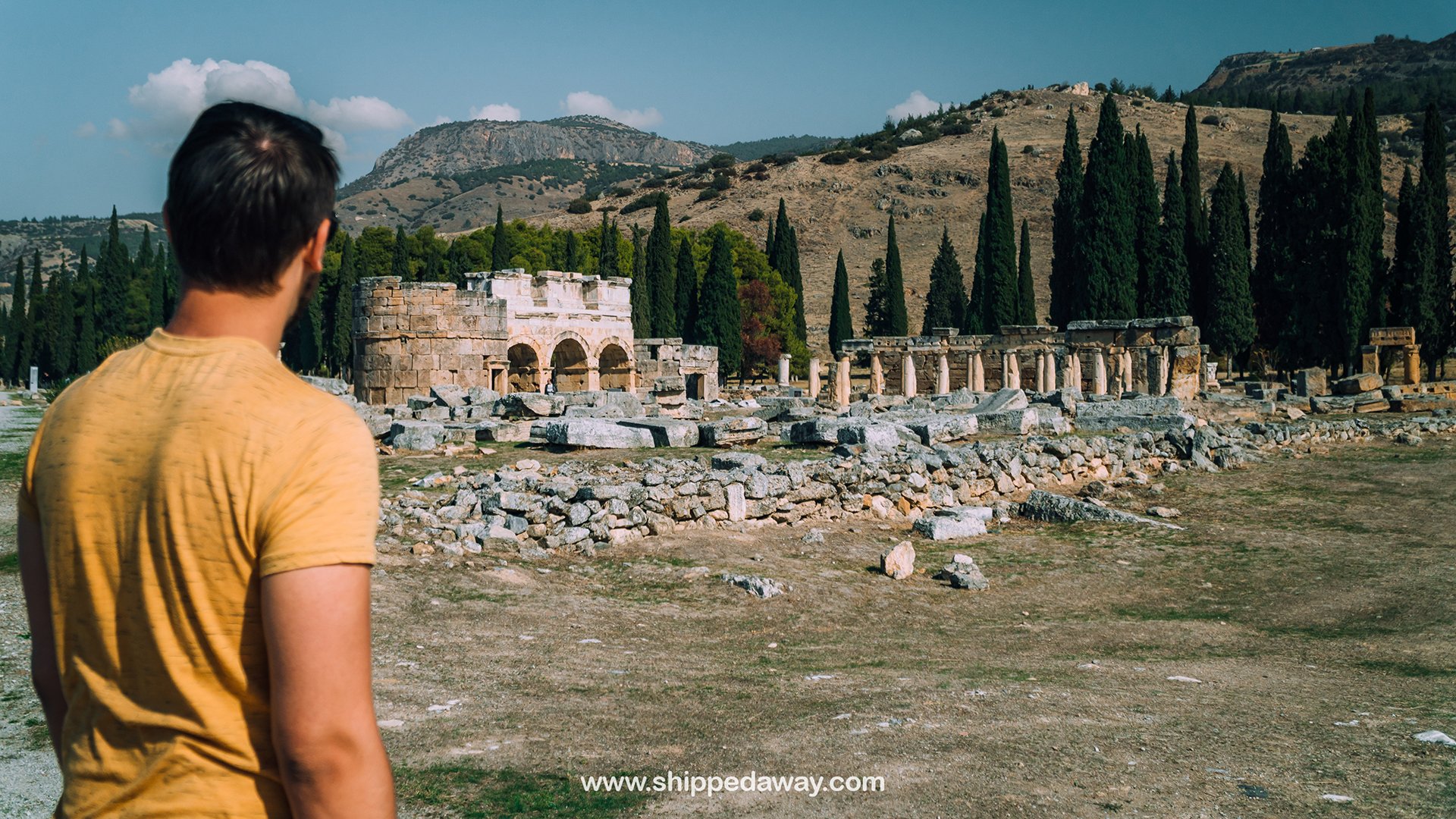
Frequently asked questions about Pamukkale
1. Why are Pamukkale travertines white?
The travertines at Pamukkale are white because of the natural process where calcite-rich water flows from hot springs and gets deposited on the hills below, forming these snow-white terraces.
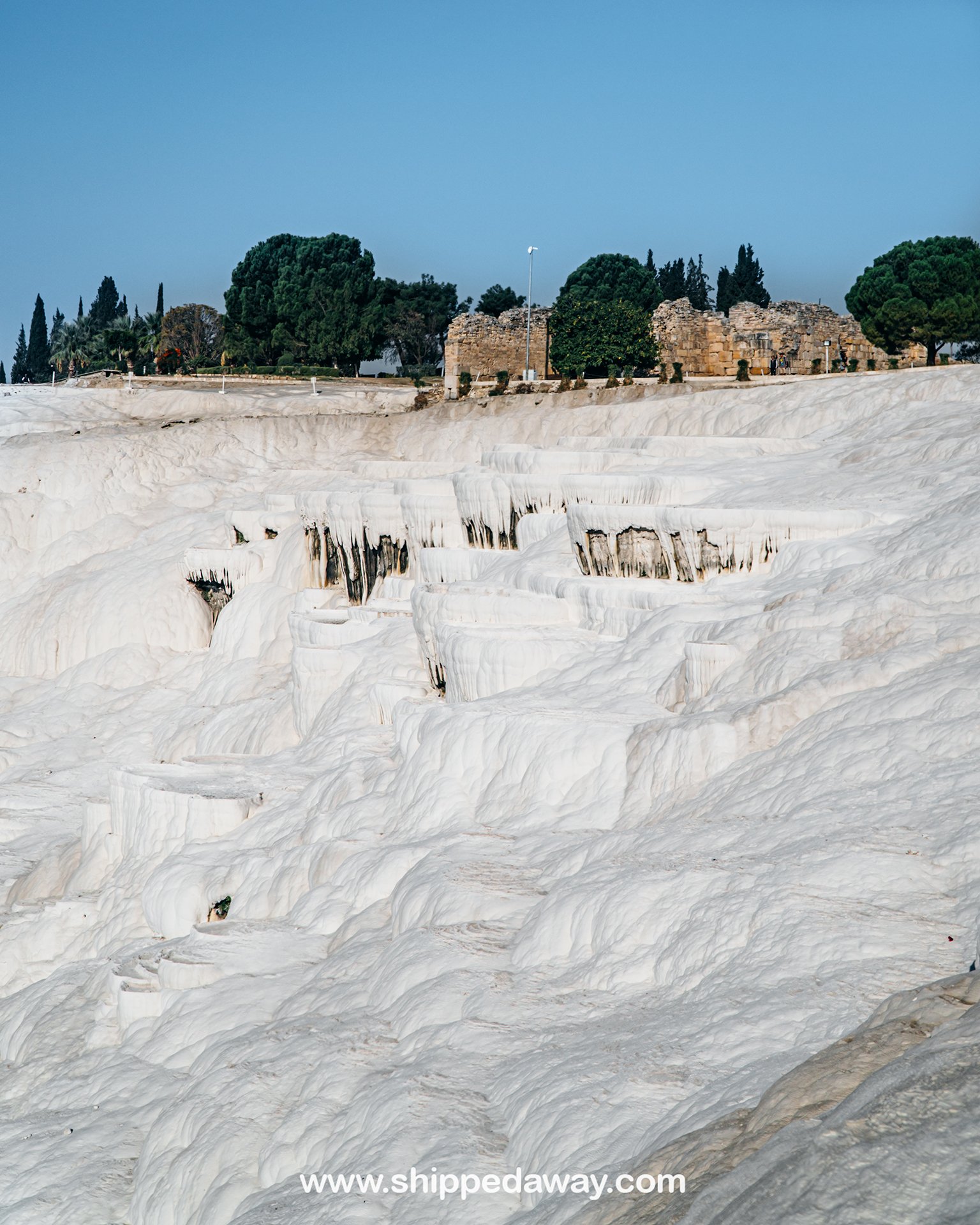
2. Are Pamukkale travertines ruined?
Pamukkale travertines are a natural phenomenon and understandably change through time. Some pools at Pamukkale lose water in them, while others gain it. Though a lot of the water was actually diverted to the town for use by people.
In the 1980s there was a road that people used to bring tourists from the town directly up the slope of the Pamukkale travertines. That road was luckily put out of use in the 1990s when they created a series of artificial pools in its place instead.
The local authorities also bulldozed many hotels built directly next to the travertines and converted the area into a park.
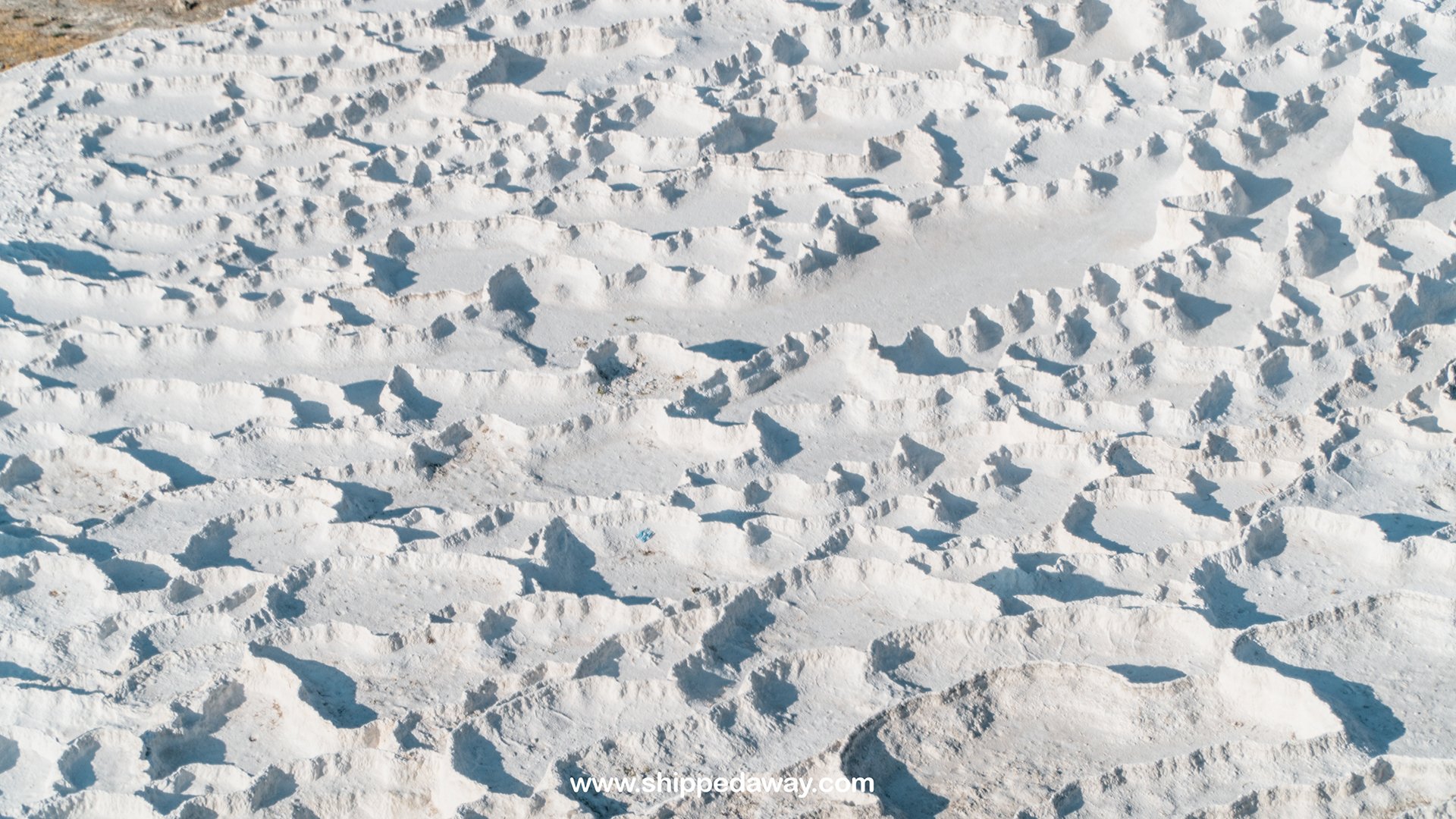
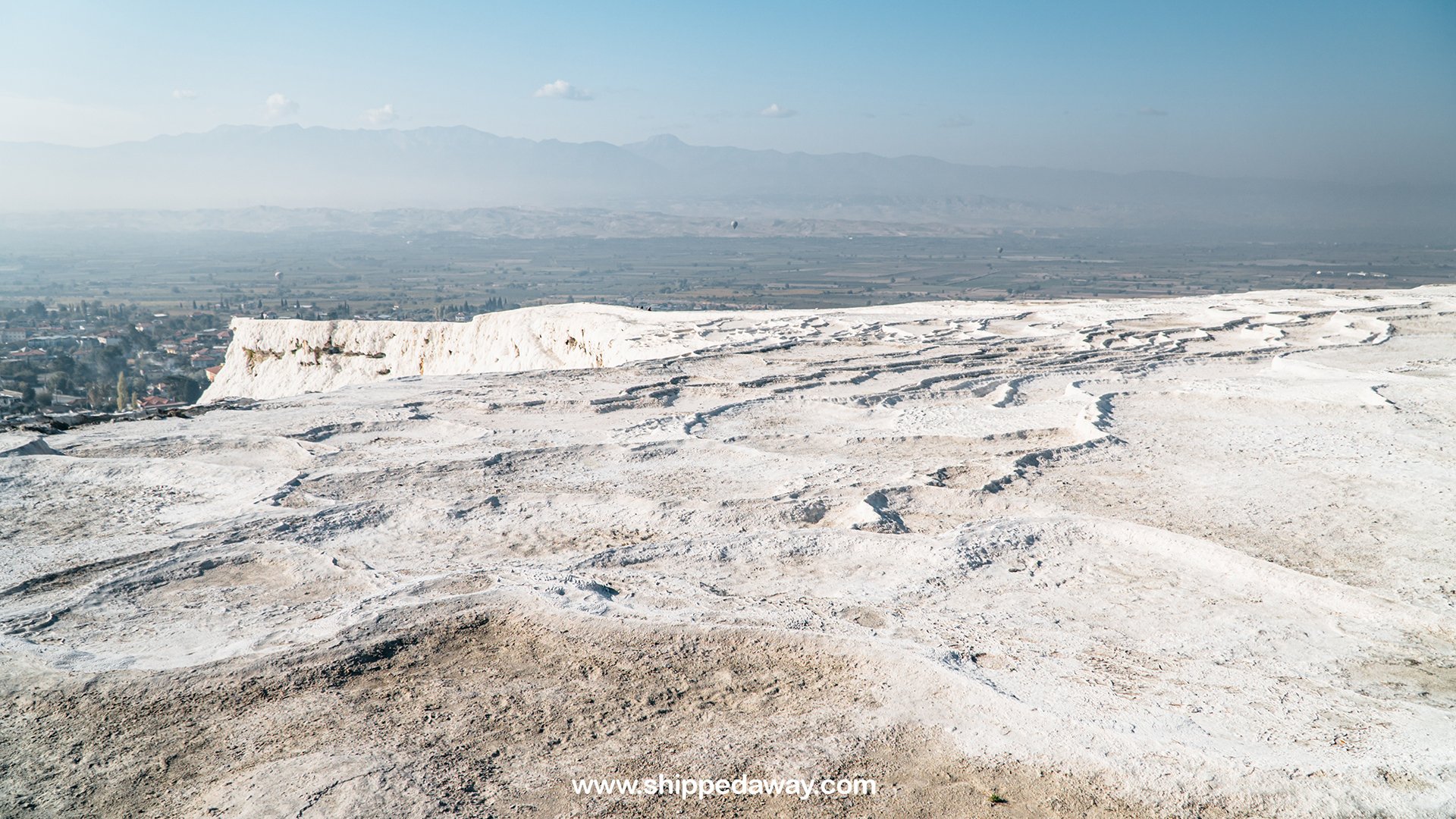
3. Are Pamukkale travertines fake?
No, Pamukkale travertines are not fake, but many photos online portray it very differently. It’s shown that there are many more pools with water than there are in reality, with colors heavily adjusted.
Many of the more prominent natural pools are not accessible and won’t look like those in the photos.
It’s important to note that many of those dreamy videos and pictures are taken from the forbidden pools (the ones you shouldn’t access) and from a certain angle.
So no, Pamukkale travertines are not fake, but many times are portrayed wrongly.
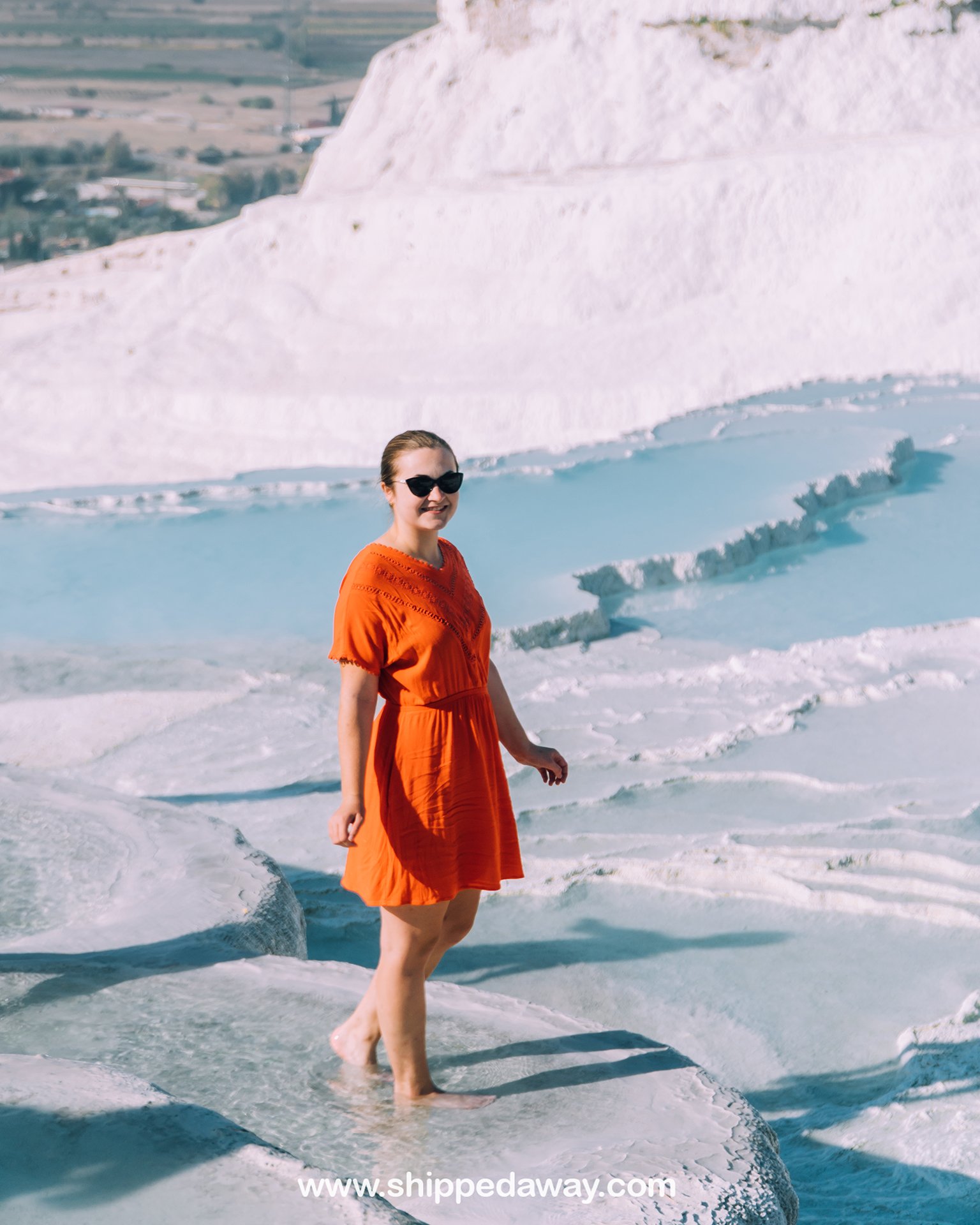
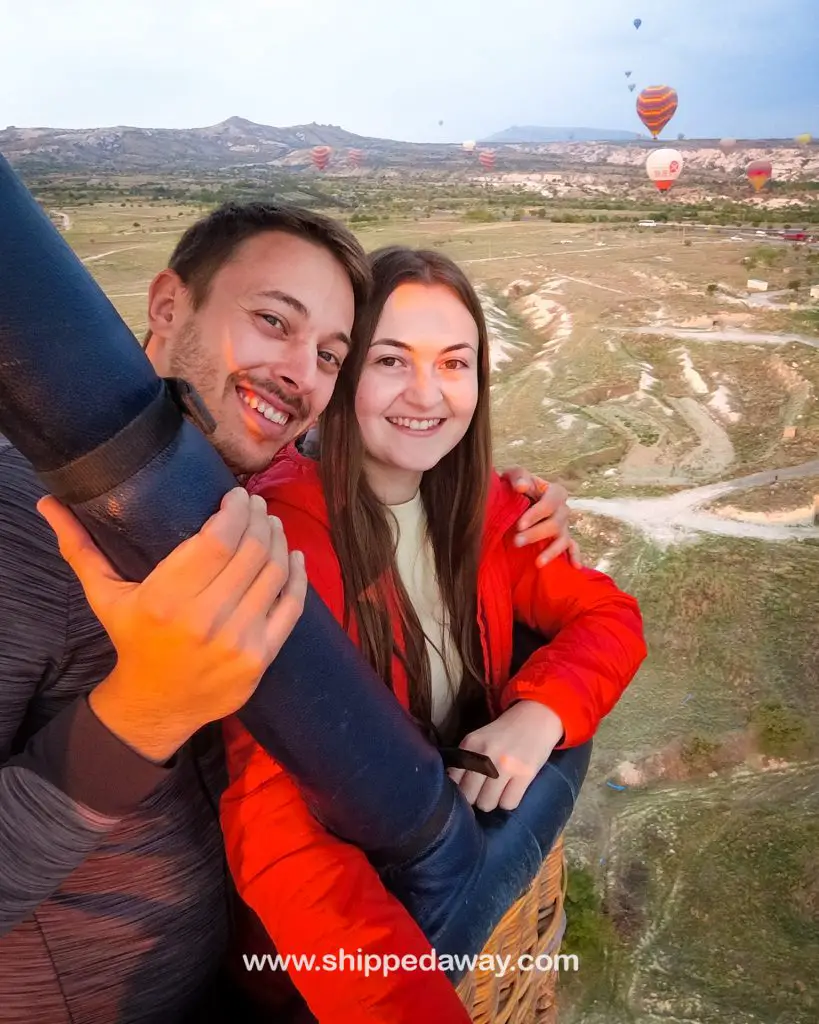
15% OFF Heymondo Travel Insurance
With 24/7 worldwide assistance, Heymondo insurance includes comprehensive coverage for medical expenses, trip cancellations, and baggage loss or delay.
Tip: Get 15% off until 24th March! (Buy now, travel later!)
4. Can you bathe in Pamukkale?
You can bathe in Pamukkale only in selected pools created explicitly for that purpose (artificial ones) and in Cleopatra’s Pool. The reason for this is preservation.
The travertines are exceptionally delicate, and their surfaces can easily be destroyed, so visitors are asked not to stray from the official path to avoid damaging this unusual natural formation.
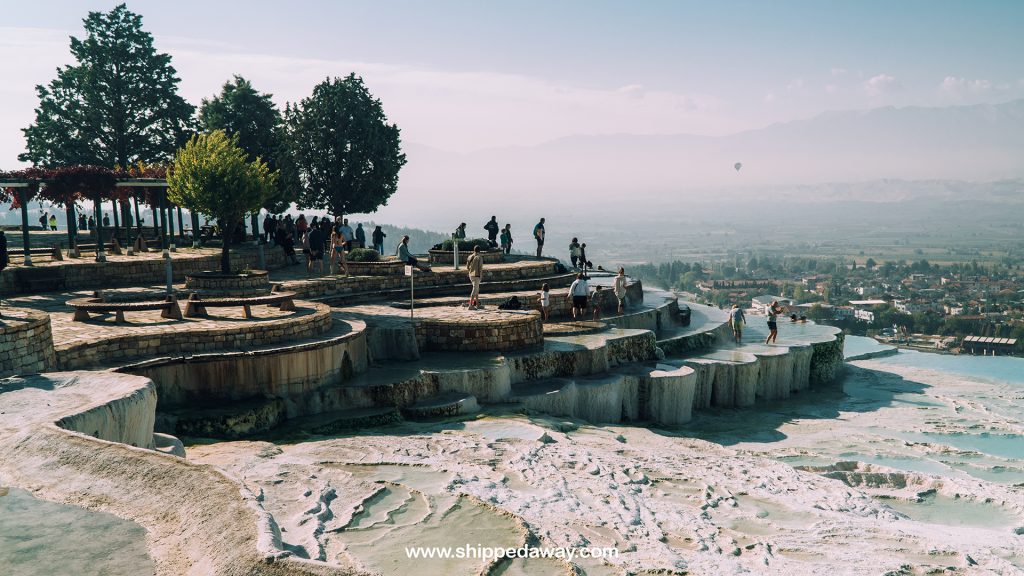
5. Are Pamukkale pools dirty?
The artificial pools at Pamukkale natural pools can be pretty dirty, especially the lower ones. When we were there, we found a lot of hair, paper, bandages, and some other small trash items, which kind of goes hand in hand with the immense number of daily visitors.
But they are cleaned in general, so it depends on the time you visit.
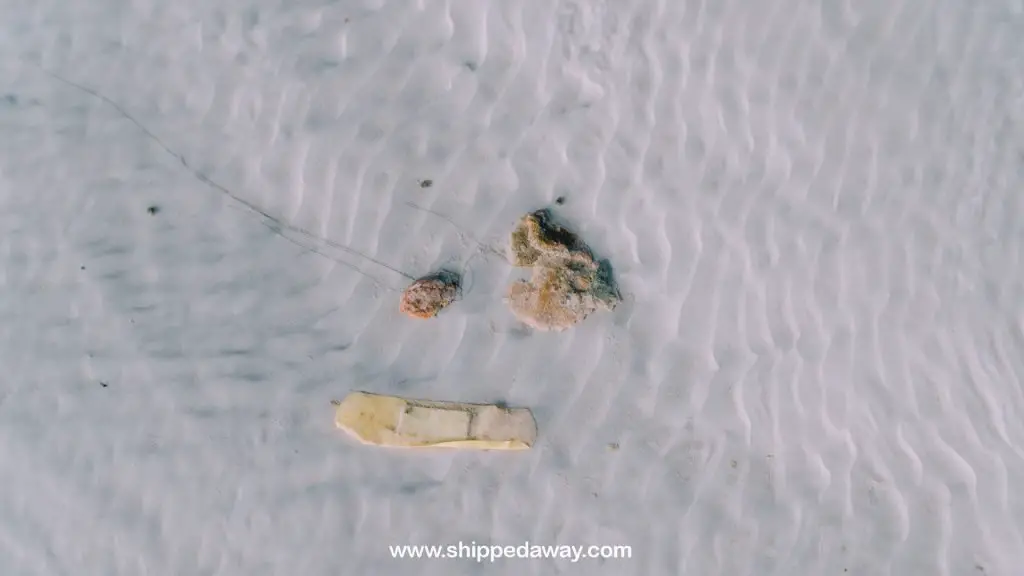
6. Is Pamukkale a hot spring?
The travertines in Pamukkale are very much like a hot spring, as hot thermal water flows down the hill, and you can bathe in the created pools. There are also other hot springs in the area, such as Cleopatra’s Antique Pool or the Red Springs of Karahayit.
7. Is Pamukkale a tourist trap?
Pamukkale is definitely not a tourist trap, as it’s an incredible natural wonder that is worth the visit. And it’s not too expensive, as with one ticket you get access to the travertines and Hierapolis.
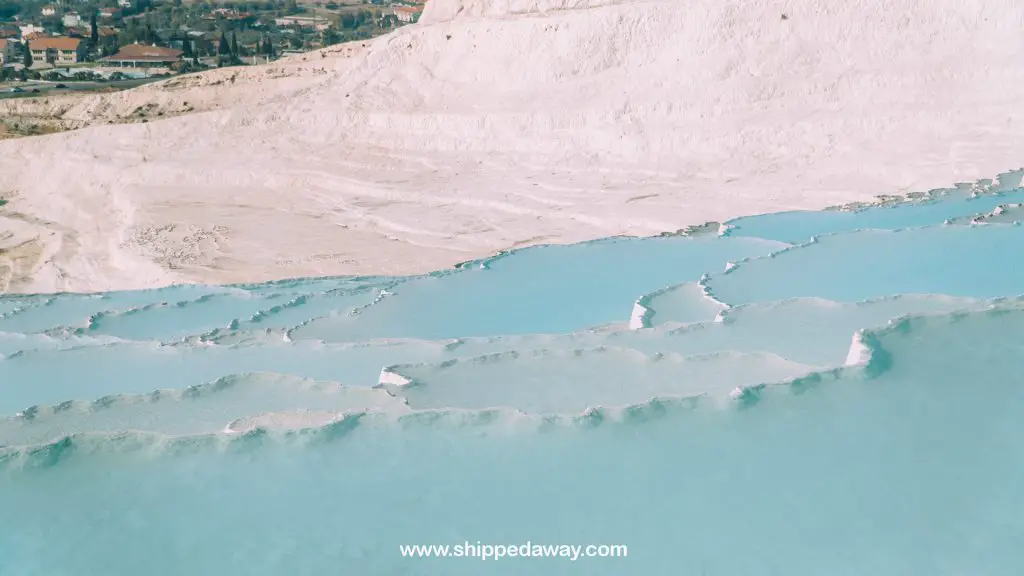
8. Is Pamukkale wheelchair accessible?
A big part of Pamukkale is wheelchair accessible, and even though you can’t go to the artificial pools to bathe in, you can see everything from the top of the hill.
You can also visit the Hierapolis ruins, the museum, and a circular boardwalk around one part of the hill.
The most accessible entrance for wheelchair users at Pamukkale is the south gate, as it has a smooth sidewalk leading up towards the museum and pools.
9. Why is Pamukkale also called Cotton Castle?
Pamukkale means “cotton castle” in Turkish, and it’s because, through time, the hot springs released mineral-rich water onto the hilly landscape below, which formed a unique natural structure that looks like a cotton castle.
RECOMMENDED TOURS
Top things to do in Pamukkale
Pamukkale’s top attractions are:
- Pamukkale Thermal Pools
- Cleopatra’s Antique Pool
- Hierapolis Ancient Theatre
- Hierapolis Archaeology Museum
- Necropole of Hierapolis
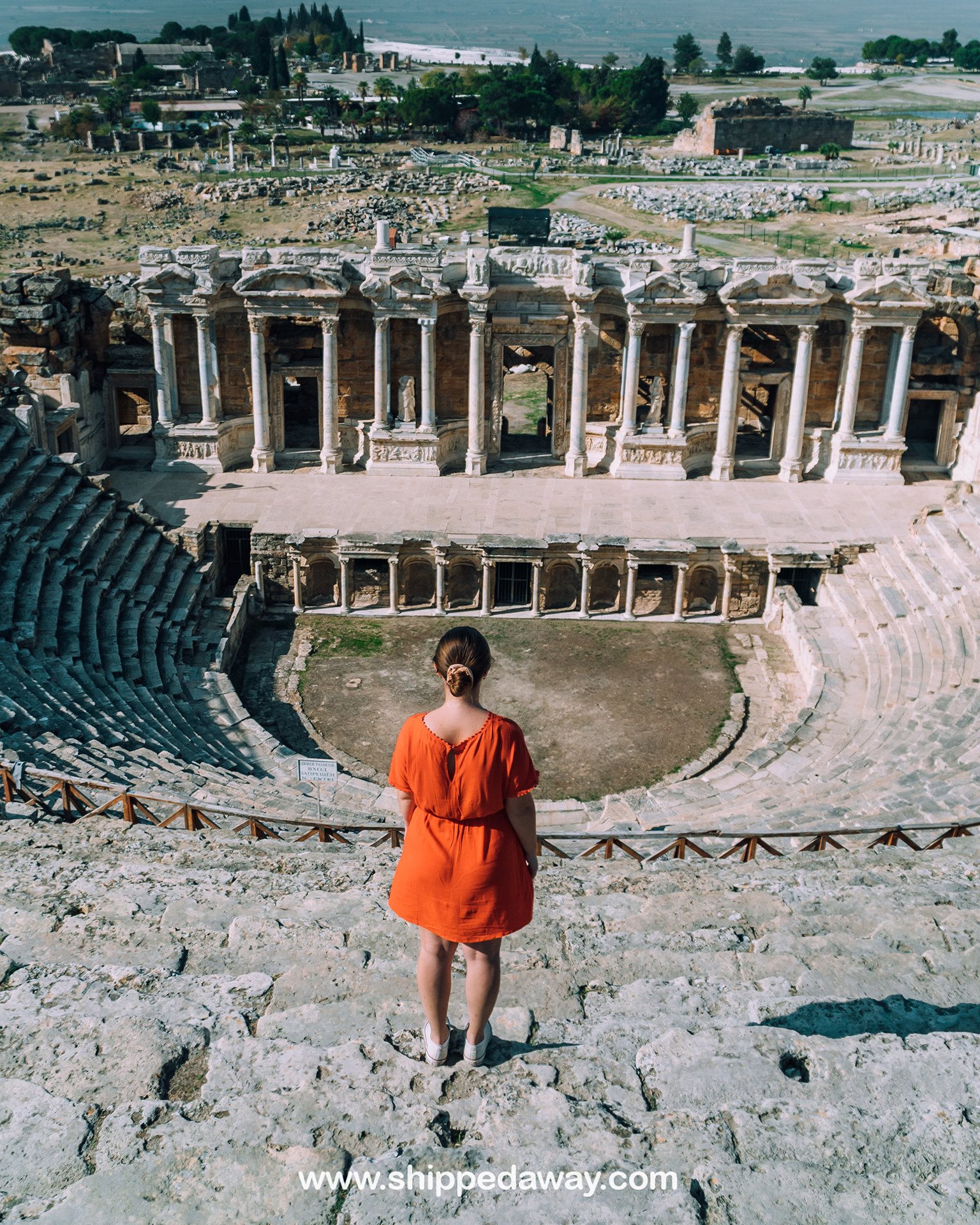
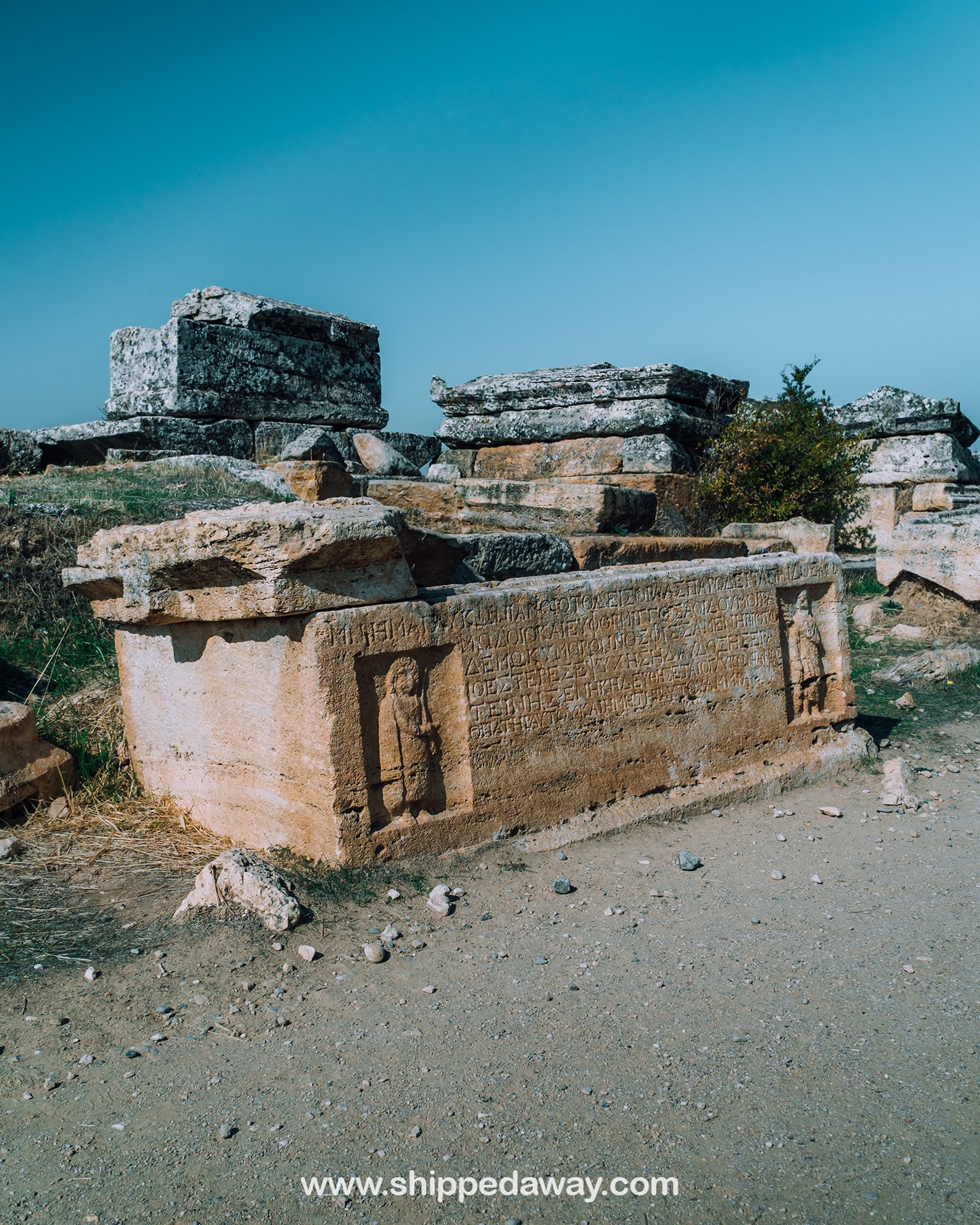
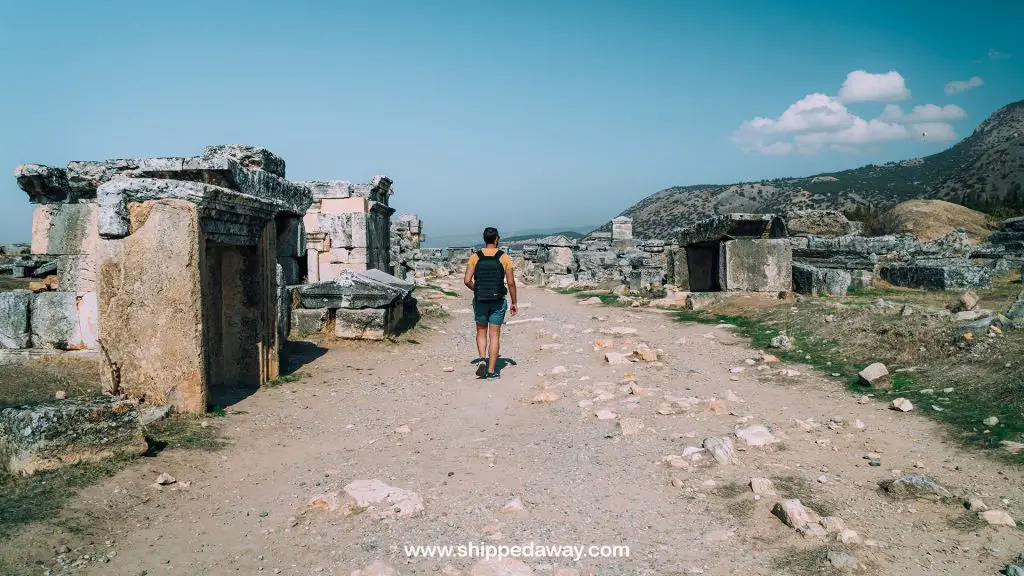
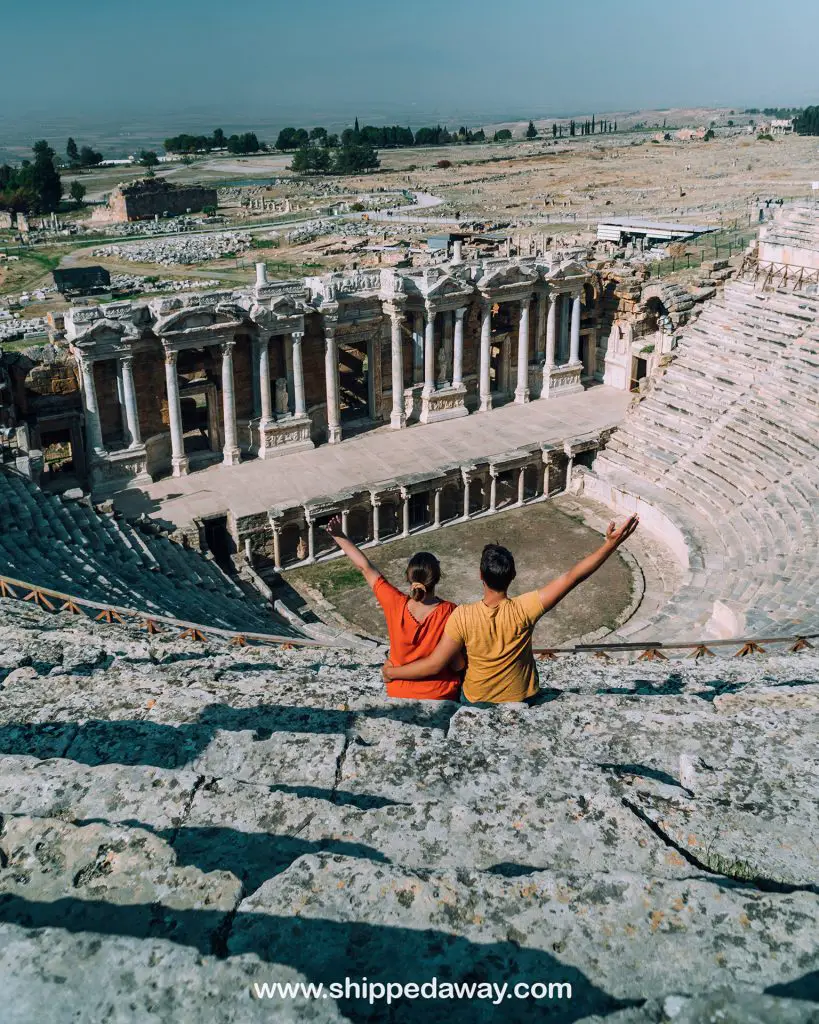
Need a reliable Turkey mobile package to stay online?
While you can find WiFi practically everywhere, in hotels, cafes, restaurants, and even beach bars, having a reliable mobile package in Turkey is the way to go. We recommend the unlimited data eSIM packages from Holafly.
Tip: Shipped Away readers get 5% off with the code SHIPPEDAWAY
What else is there to do in Pamukkale?
Beyond visiting the Cotton Castle and Hierapolis in Pamukkale, you can also see other archeological sites like Aphrodisias, ride the Denizli Cable Car, go on a hot air balloon ride, or paraglide over the travertines.

Book your adventure:
RECOMMENDED TOURS
Although Pamukkale is not the most famous spot in Turkey for hot air ballooning or paragliding (we went paragliding in Oludeniz), it still is a great place for these activities, and we can imagine it’s a pretty cool experience.
What not to do in Pamukkale
Please respect the rules at Pamukkale and don’t go in the areas that are protected.
Don’t be that selfish person who will do anything just to get that perfect Instagram photo and thus contribute to destroying the natural pools.
When we visited, one girl did go to the forbidden area just to take that photo and was hurriedly told off by the security guards.
What should I wear to Pamukkale?
Shorts, T-shirts, and sandals are the preferred option when visiting Pamukkale, as it’s perfect if you want to enjoy the sun and water while being comfortable.
Bring a bathing suit to Pamukkale if you plan to bathe and some sunscreen and drinking water, as it can get really hot during the warmer months.
If you’re visiting Pamukkale off-season, bring something warm, as it can be chilly in the morning and towards the evening, especially if it’s not a sunny day.
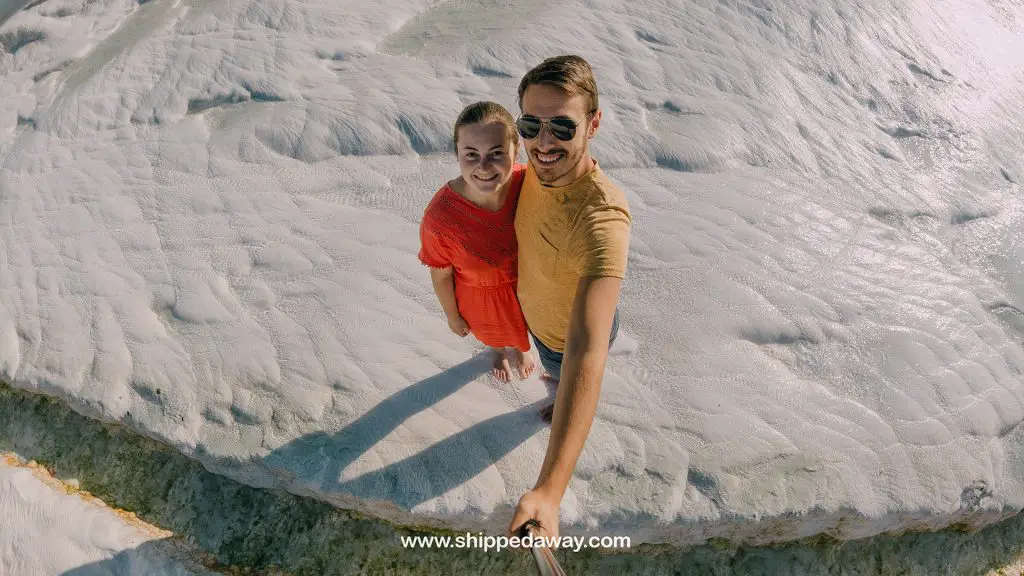
RECOMMENDED TOURS
Key travel tips for visiting Pamukkale
- Bring a bag to put shoes in, as you have to be barefoot while walking up or down the slope.
- Toilets and changing rooms are available at the top of Pamukkale pools, where most people bathe.
- When visiting Pamukkale in colder months, the ground will be icy in the mornings, especially in the lower part.
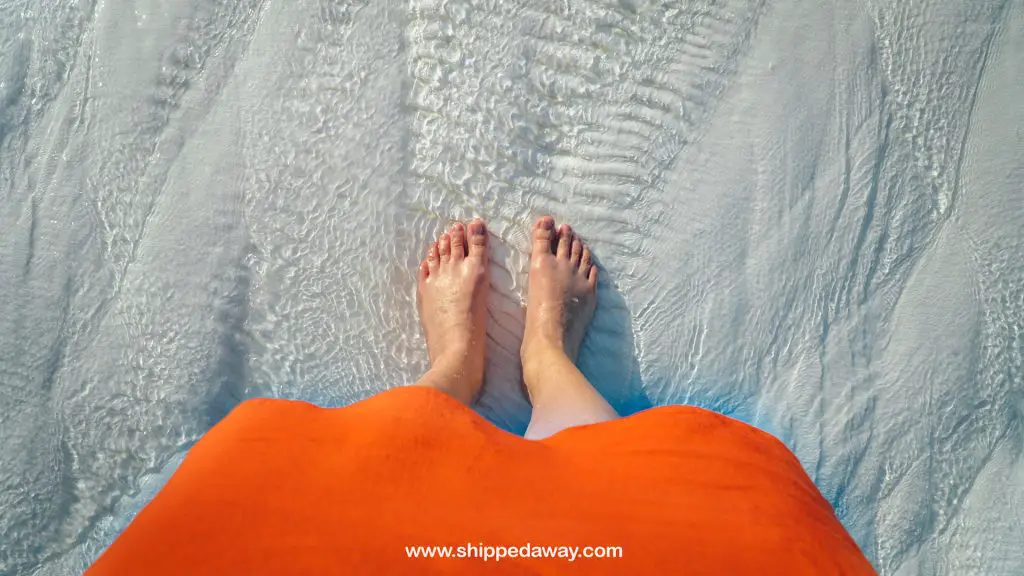
- The pools you can walk in have a lot of sediment on the bottom, and it can be quite slippery to walk on, so be careful if you don’t want to end up in the water. Also, the ground is not the easiest to walk on barefoot in some parts, so go slower there.
- Remember that if you visit Hierapolis and walk to the north entrance and pass through the whole necropolis, you will also have to return if you entered/parked in the south part. That means you will do approximately 5km altogether. We actually hitchhiked a ride back to the town where we parked our car. Though there is a bus that passes the north entrance, and in the season, you can find a taxi or two as well.
- If you do walk to the north entrance and want to get back to the pools, there is a shuttle bus/golf cart service that can take you back.
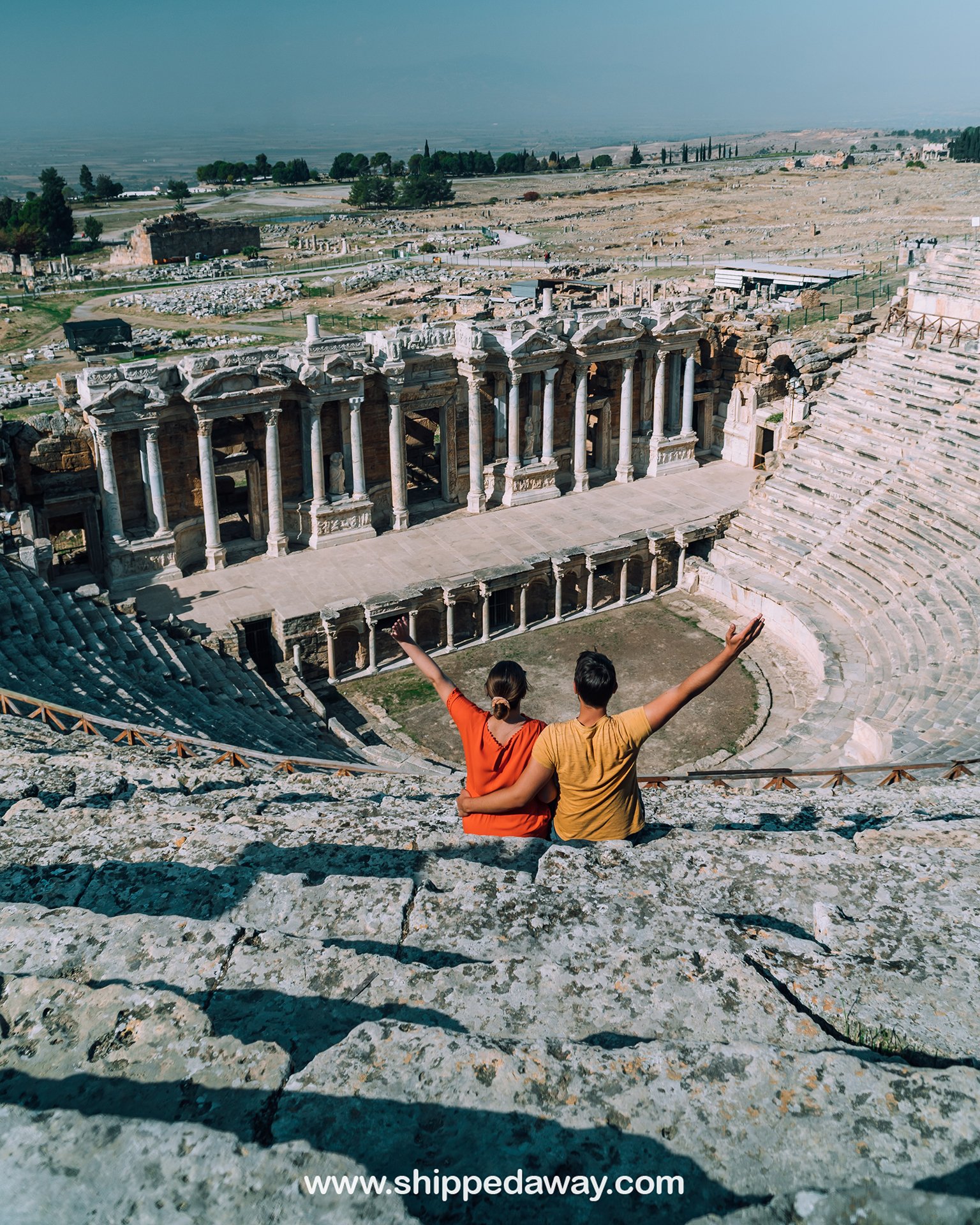
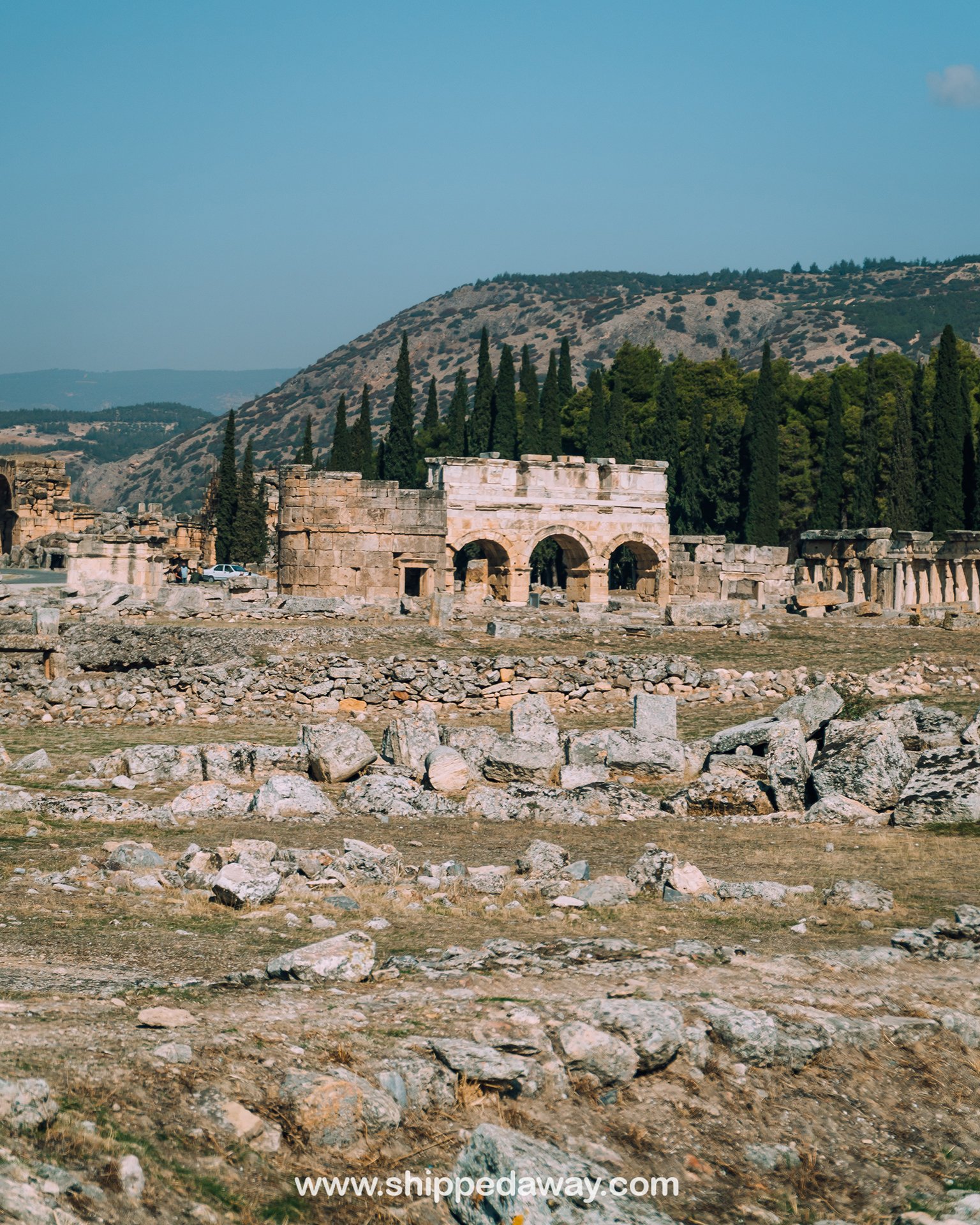
What is the entrance fee for Pamukkale?
The entrance ticket for Pamukkale Travertines (Cotton Castle) is 110 Turkish Lira or 7.5 USD, and it includes a visit to the ancient city of Hierapolis.
The entrance ticket for swimming at Cleopatra’s Ancient Pool at Pamukkale is 100 Turkish Lira or around 7 USD.
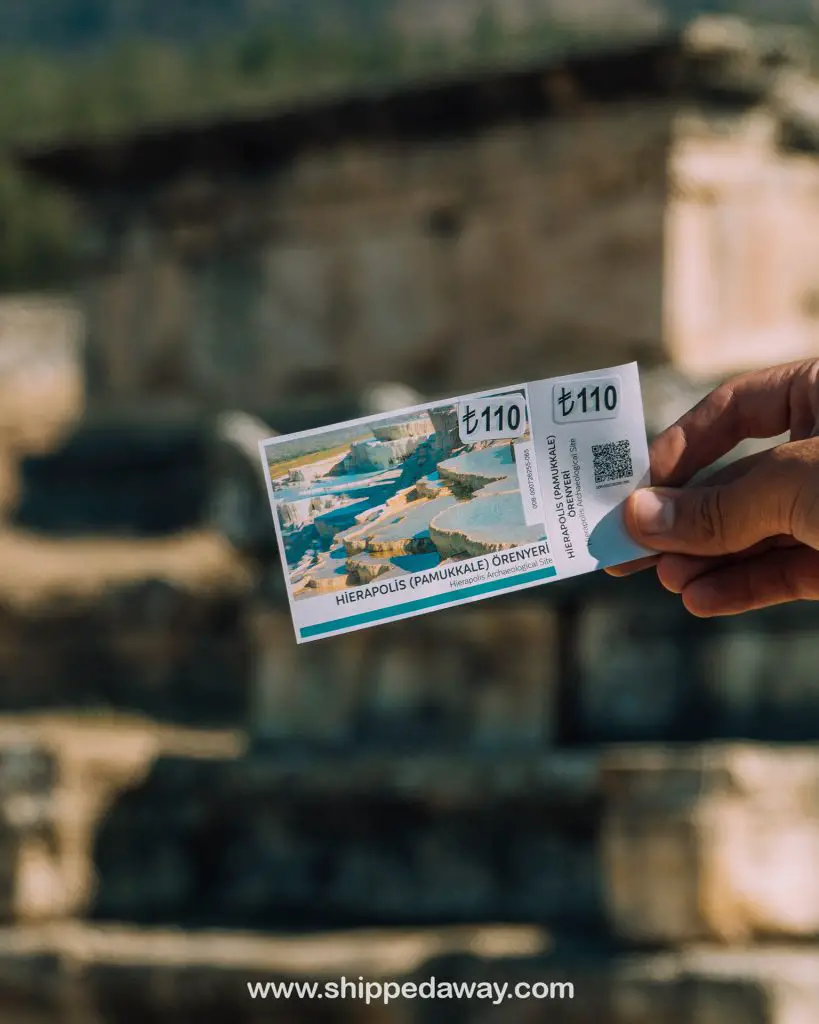
You can also visit Pamukkale with a Turkish Museum Pass that will cover its entrance.
If you plan to visit several museums and archeological sites in Turkey, the Museum Pass is a great way to save some money and time, as you can essentially skip the lines.
Check out the Turkey Museum Passes at muze.gen.tr/MuseumPasses.
What are the opening hours of Pamukkale?
Pamukkale and Hierapolis are open every day from 06:30 to 20:00 in the spring, from 06:30 to 20:30 in the summer, and from 06:30 to 18:00 in the winter.
The opening hours for Pamukkale and Hierapolis in 2024 are:
- from 6:30 to 20:00 from 1st March until 31st May.
- from 6:30 to 20:30 from 1st June until 30 September.
- from 6:30 to 20:00 from 1st October until 31st October.
- from 6:30 to 18:00 from 1st November until 28th February.

Note: Only the south gate of Pamukkale opens at 06:30, and the other gates open at 08:00, so keep that in mind if you’re going very early.
The Hierapolis Museum works between 08:00 and 19:00 from 15th April until 30th September and between 08:00 and 17:00 from 1st October until 14th April.
What is the best time to visit Pamukkale?
The best time to visit Pamukkale is in the spring (Apr-May) and fall (Sep-Oct), with pleasant weather and minimal tourists, as Pamukkale is highly overcrowded in the summer months.
On the other hand, if you are visiting Pamukkale in the summer (Jun – Aug), it’s best to come as early in the morning as possible if you would like to avoid the crowds.
Spring and fall in Pamukkale should still be an enjoyable time to visit, as we were there at the end of October, and the daytime temperature was still very high, and the water was warm.
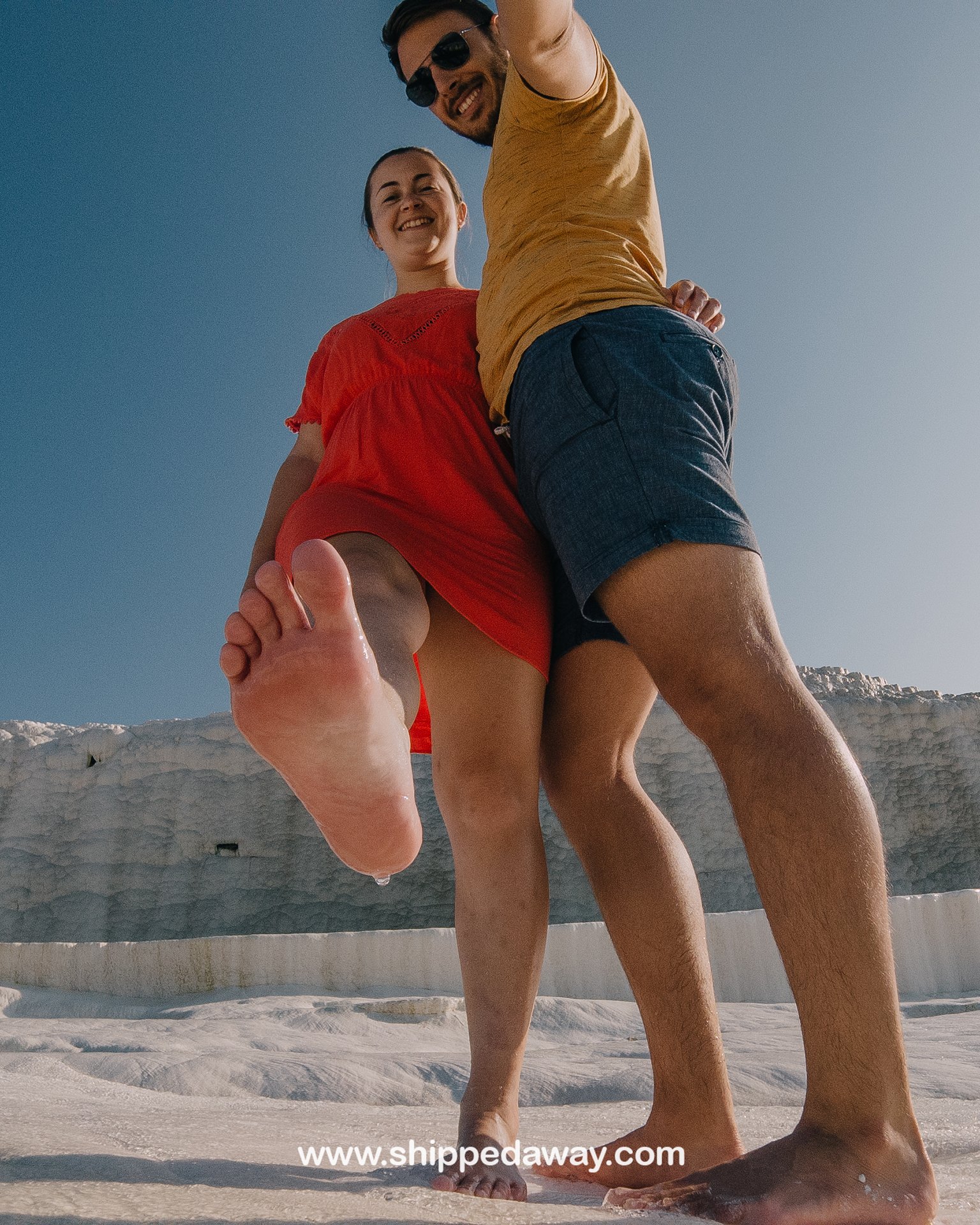

If you come to Pamukkale in the early morning at the opening time as we did, prepare to be cold on your feet as you have to walk barefoot over the cold rock. If you enter from the side of the town, it will take a few minutes before you reach the part where the flowing water will get warmer.
How long should I spend in Pamukkale?
You can spend a half-day or full-day at Pamukkale and Hierapolis, but an overnight stay is much more suitable if you also want to visit some nearby places. Otherwise, day trips to Pamukkale are run from Izmir, Fethiye, Kas, and Antalya.
We made a trip from Antalya and visited Pamukkale for a half-day, and after Pamukkale, we also visited Salda Lake (travel guide coming soon!) before returning back to Antalya.
RECOMMENDED TOURS
Is Pamukkale safe?
Pamukkale is one of Turkey’s most popular tourist destinations and one of Turkey’s safest places to visit, which makes it an even more popular tourist destination.
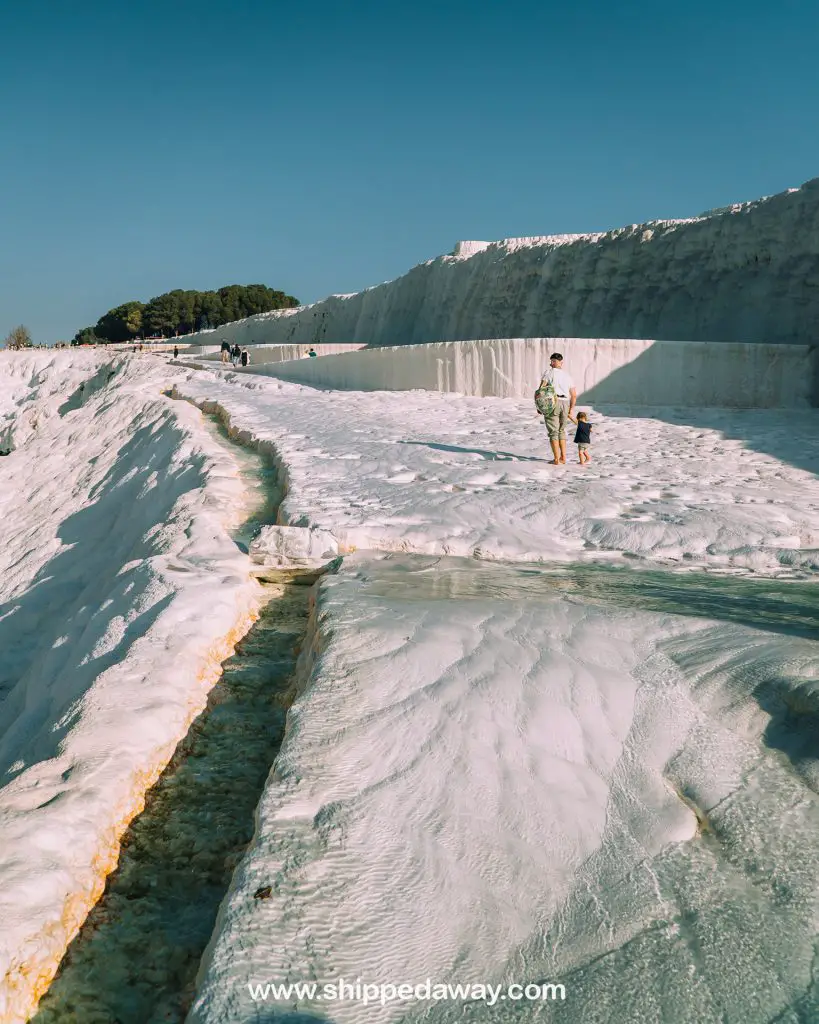

15% OFF Heymondo Travel Insurance
With 24/7 worldwide assistance, Heymondo insurance includes comprehensive coverage for medical expenses, trip cancellations, and baggage loss or delay.
Tip: Get 15% off until 24th March! (Buy now, travel later!)
Is Pamukkale worth visiting?
Pamukkale is worthy of everyone’s visit because of the natural phenomenon of the travertines and hot springs, its location filled with history, culture, and the beautiful scenery in general.
Even though we knew that it wouldn’t look exactly like in the photos before we visited, we still enjoyed our visit very much and didn’t regret coming to Pamukkale.
Just set your expectations, and don’t expect those dreamy Instagram shots, as it’s not like that in reality. At least not where you are allowed to go.
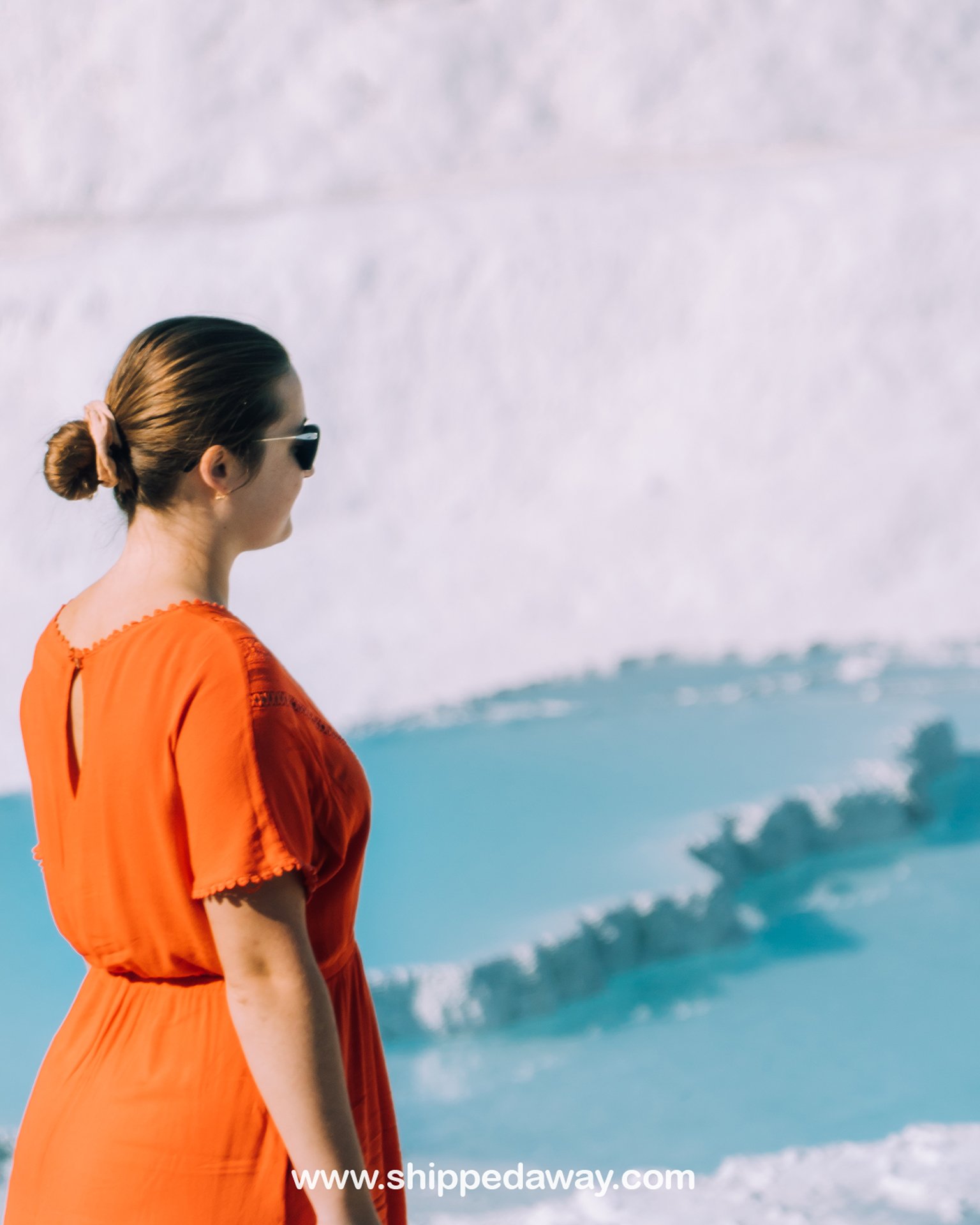

RECOMMENDED TOURS
Which entrance is best to visit Pamukkale?
The lower entrance by the town at Pamukkale is the most popular because it is the easiest to get to, and you can quickly walk up to the pools. However, it doesn’t have that many parking spots available.
The north entrance of Pamukkale (by the Necropolis) is the furthest away, so if you’re coming just for the pools, it’s not the right option, as you have to walk about 2 kilometers (20 minutes) to get to them, and then walk another 2 kilometers back.
The south entrance of Pamukkale is excellent if you’re coming with your own transportation as it has a big parking space, and you can reach the upper, warmer pools in just a few minutes.

Stay protected on public WiFi
We’ve been using NordVPN for over 5 years now and can highly recommend the tool for protecting your privacy and freedom while browsing the internet.
It encrypts your connection and hides your data from potential hackers. Also, with a VPN, you can access blocked/restricted content like some Netflix movies or booking sites.
TIP: Shipped Away readers get a special deal.
Where is Pamukkale?
Pamukkale is located 17km away from Denizli in Southwestern Turkey, about a 3 to 4-hour drive away from either Izmir, Antalya, or Fethiye.
How to get to Pamukkale
Pamukkale is one of Turkey’s most visited tourist attractions and can be easily accessed from other places in Turkey, like Istanbul, Izmir, Antalya, Fethiye, and Ankara.
By car, you will reach Pamukkale in around 4 hours from Izmir, 4 hours from Fethiye, 2.5 hours from Kas, and 3.5 hours from Antalya.
Check out this table for Pamukkale travel times and prices:
| FROM | Flight | Bus | Train |
|---|---|---|---|
| Istanbul | $35, 1h | $20, 10h | $20, 13h |
| Cappadocia | $60, 4h | $20, 11h | / |
| Antalya | / | $5, 3h | / |
| Fethiye | / | $8, 4h | / |
| Izmir | $60, 4h | $6, 4h | $5, 5h |
| Ankara | $60, 6h | $14, 7h | $14, 10h |
| Denizli – closest city | / | $0.5, 20min | / |
Pamukkale on a tour
Pamukkale’s popularity means there are also plenty of tours doing day trips there from Antalya, Dalaman & Fethiye, Selcuk & Izmir, and you can even take one tour directly from Istanbul.
Book your tour:
- Izmir, Selcuk/Kusadasi to Pamukkale
- Antalya to Pamukkale
- Dalaman/Fethiye to Pamukkale
- Pamukkale from Istanbul (internal flights included)
RECOMMENDED TOURS
How to get to Pamukkale from Izmir
You can drive by car in about 3 hours from Izmir to Pamukkale or go by bus or train to Denizli and then with a bus or taxi to Pamukkale in about 5 hours.
If you’re traveling from Izmir to Pamukkale by train, you can also stop at Ephesus Ancient City, as it’s right on the way (get off at Selcuk station).

Book your bus: Izmir to Denizli.
RECOMMENDED
How to get to Pamukkale from Antalya
Pamukkale is right in the middle between Antalya and Izmir, so you can easily reach it in about 3 hours with a car or with a bus in about 4.

Book your bus: Antalya to Denizli
RECOMMENDED
How to get to Pamukkale from Fethiye
Getting to Pamukkale from Fethiye is easy with a car or taking a bus from the Fethiye bus station to Denizli, and then a bus or taxi to Pamukkale.

Book your bus: Fethiye to Pamukkale
RECOMMENDED
How to get to Pamukkale from Cappadocia
Pamukkale is far away from Cappadocia, but easily reachable nonetheless, as all you need to do is either take a bus from Goreme or fly from Kayseri/Nevsehir to reach Denizli and then a bus or taxi to Pamukkale.

Book your bus: Goreme to Denizli
How to get to Pamukkale from Istanbul
Getting to Pamukkale from Istanbul can be done by flying to Denizli for only about $65 return, and then either get a bus or taxi from Denizli to Pamukkale.
You can also get a bus from Istanbul to Denizli, and it will cost around $20 and take anywhere between 8 and 10 hours.

Book your bus: Istanbul to Denizli
RECOMMENDED
How to get to Pamukkale from Ankara
The easiest way to get from Ankara to Pamukkale is by flying or taking a bus to Denizli and then a bus or taxi to Pamukkale.

Book your bus: Ankara to Denizli
How to get to Pamukkale from Denizli
If you’re starting from Denizli, it’s easy to get to Pamukkale, as it’s only about 17km away, and you can easily find buses or taxis to take you there.
You can get a bus from the Denizli Otogar Bus Station platform 76 to Pamukkale for about 5 Turkish Lira or $0.5.
Going by taxi from Denizli to Pamukkale would cost between 70 and 100 Turkish Lira or 5 to 8 USD.
Where to stay in Pamukkale
There are many accommodation options in Pamukkale. There are hotels, guesthouses, and hostels all around the region, and many offer spa services and indoor and outdoor pools.
Did you know travertines are a natural phenomenon found worldwide, not only in Turkey but also in countries like China, Iran, the US, Italy, Hungary, and Guatemala?
Have you been to any travertines before?
Looking for more travel guides and Turkey travel inspiration?



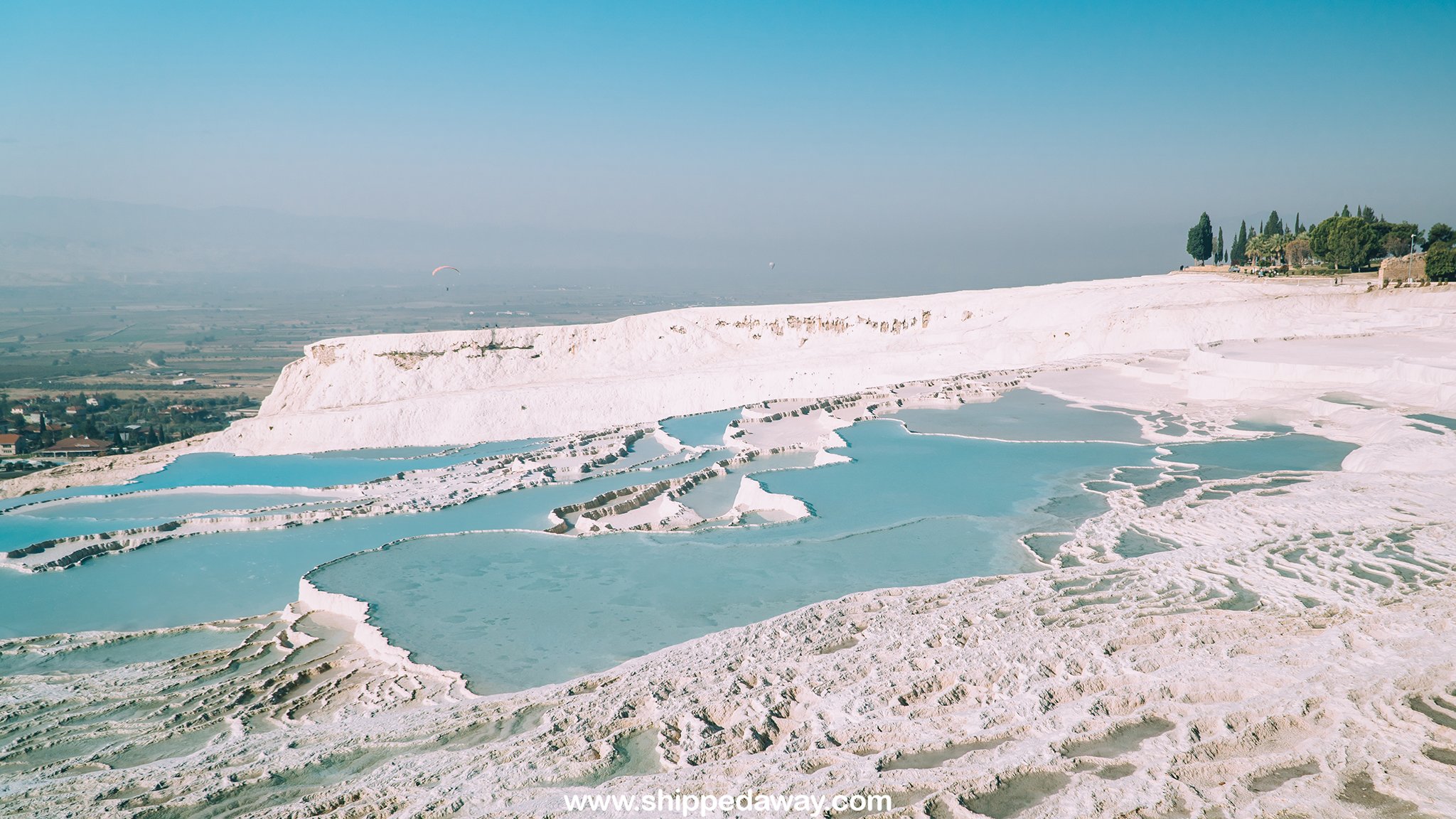











2 Responses
Great tips, it really help planning our visit to Pamukkale. I could find an answer to all of my questions. Thanks a lot!
Have a great trip!